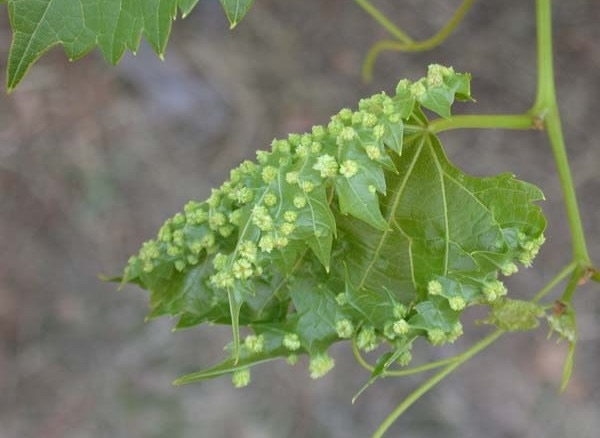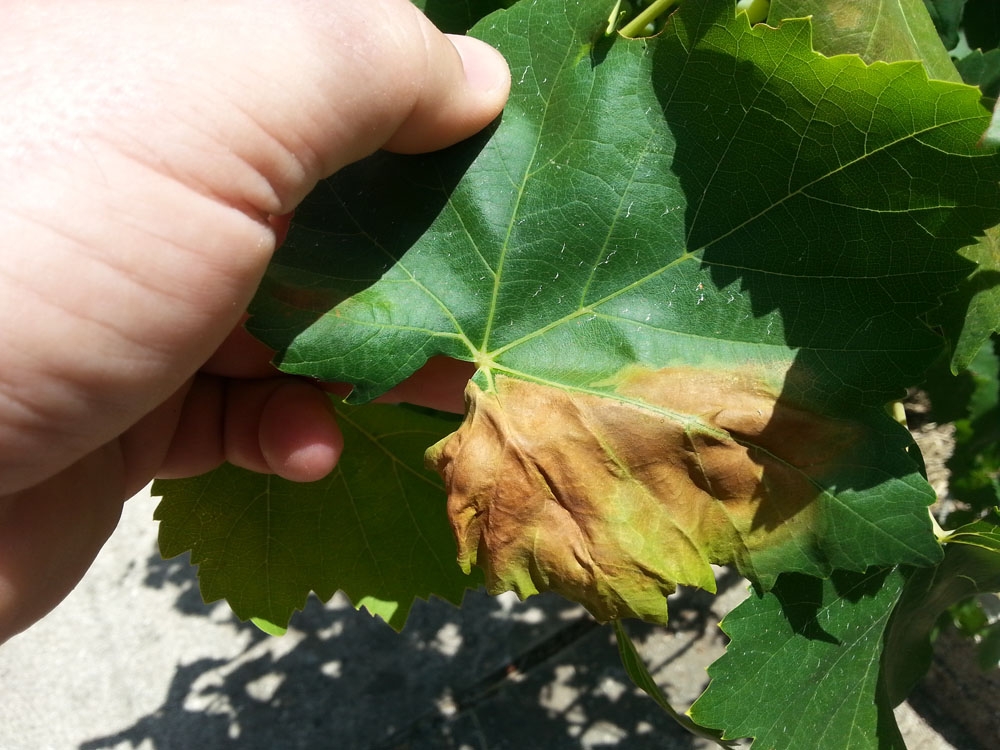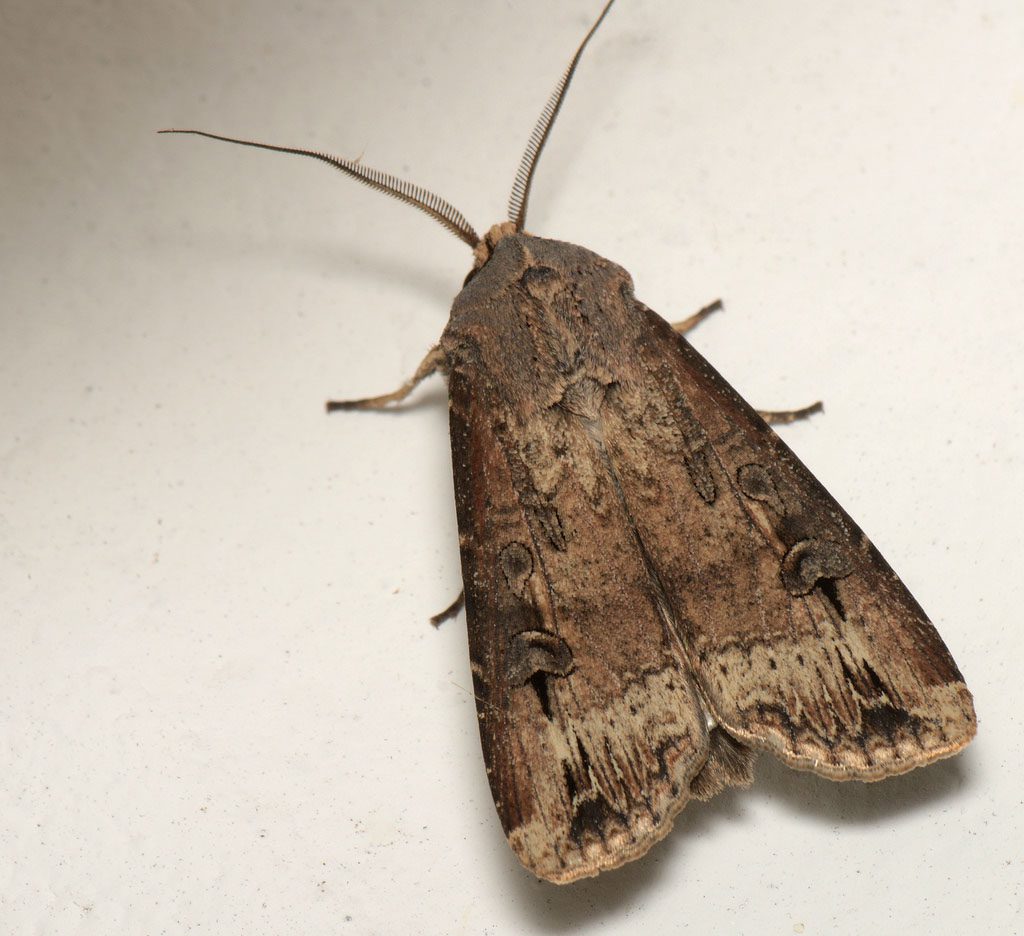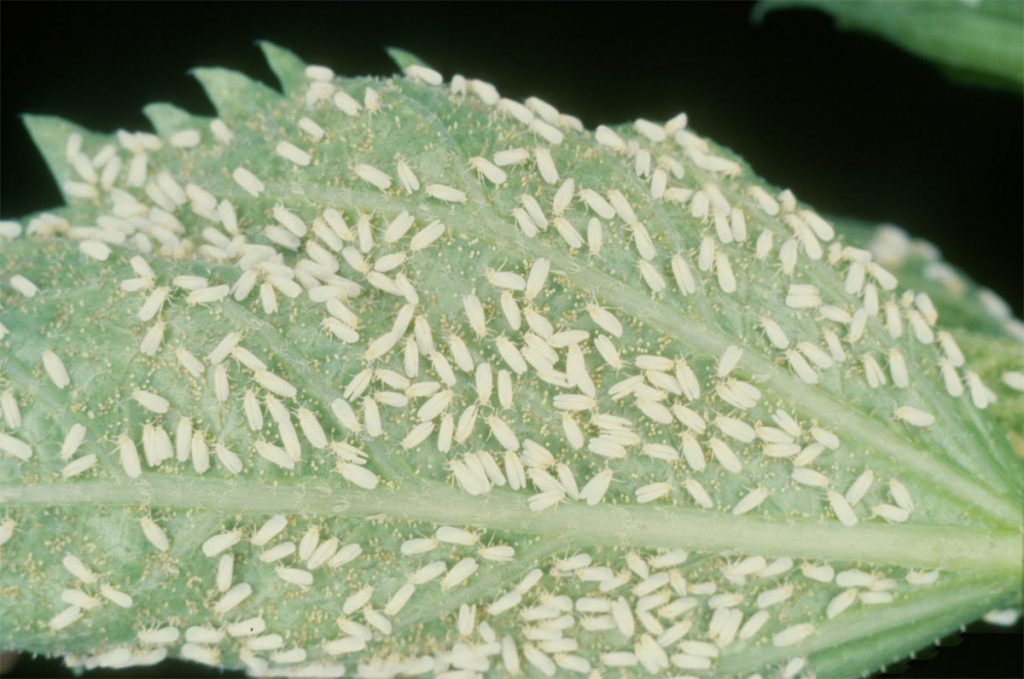Grapevine phylloxera originated in North America and spread to Europe. In Greece it was first recorded in 1892-1908 on the islands of the eastern Aegean Sea and in 1898 in Pylaia, Thessaloniki. Grapevine phylloxera insect had previously caused in Greece the total destruction of vineyards (native vineyards) over a large area and still exists as a problem in Crete.
Scientific name: Viteus vitifolii
Other name: Phylloxera, Grape leaf louse, Grape phylloxera, Vine louse
Greek name: Φυλλοξήρα
Damage
Five forms of grapevine phylloxera are distinguished, two of which cause direct damage: rhizobia, which attacks and destroys the roots of European cultivars (secondary hosts) and phyllobia, which spots the leaves of American cultivars (primary hosts). They wet and suck the rhizomes and roots of the vine causing the formation of phyllodes on the rhizomes and nodules (carcinomas) on the larger roots. This is followed by rotting of the affected parts and the entire root system is destroyed. In the aboveground part of the stump the symptoms are manifested as delayed germination, chlorosis, drying of leaves, premature defoliation and finally drying of the whole plant. In American species, the root system is affected, but they have the ability to rapidly establish corky tissue that prevents the damage from spreading, showing resistance.
Enemy
It is a polymorphic aphid. The adult is flightless, 0.8-1.2 mm long.
The mode of perpetuation of grapevine phylloxera in European vines differs from that in American species.
The European vine is dominated by the rhizobial form and in rare cases cetacean individuals are produced. It usually spreads as a larva in the soil and feeds on the plant juices of the roots. It has several generations per year (up to 12-15).
In American Vitis species, which are its main hosts, it occurs in 5 different forms:
1) phyllobic or cetacean
2) rhizobia
3) phylogeny
4) male
5) female
It spreads in the form of a winter egg under dry bark or in sheltered places in the bark of the trunk or arms.
Grapevine phylloxeraa is transmitted and spread by many means, such as movement of insect individuals in or out of the soil, with infected parts (e.g. cuttings), contaminated soil, stakes, tools and grape packing materials.
Treatment
Control is achieved only by replanting and planting inoculated varieties on American rootstocks.
Source
www.bayercropscience.gr
Viteus vitifoliae (grapevine phylloxera)
Phylloxera
Tags: PLANTS ENEMY • VINEYARD





